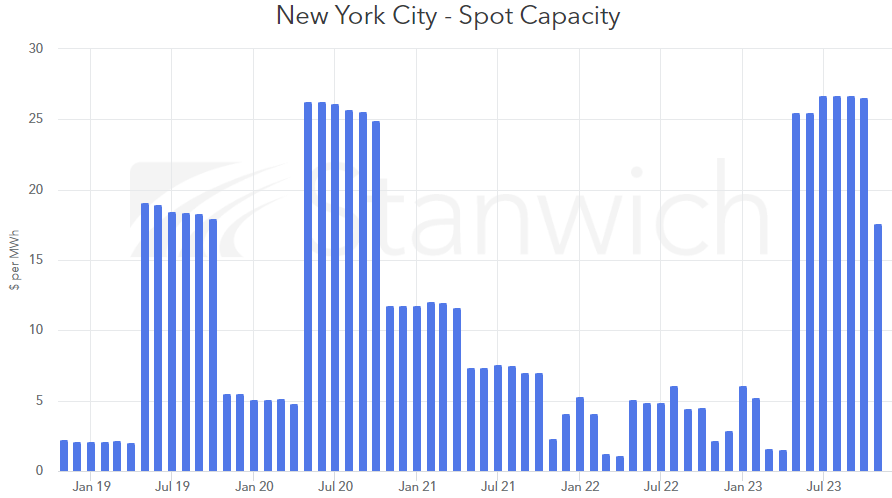Explore Other Resources
Subscribe Today!
Navigating the Volatile Future of Energy Capacity
State carbon reduction efforts influence capacity charges in New York City and Northern New Jersey.
Why are capacity costs rising? - A few reasons— state renewable energy goals are pushing older fossil fueled generators off-line and transformative projects aimed at bringing clean renewable energy to city centers are facing delays, among other reasons.
Retail energy suppliers are shifting capacity cost risk – To combat the increased volatility in the capacity market, retail energy suppliers are altering their view on capacity based on volatility and capacity scarcity.
How can end users manage these changes – Two ways. 1). The ability to reduce consumption on the highest demand days can reduce overall costs, and 2). determine how capacity is included in your energy supply agreement to understand the impact on your energy budget.

Capacity costs are on the rise due to a combination of factors, including an increased Installed Reserve Margin (IRM) in New York City, the implementation of carbon reducing initiatives like the Peaker Rule in New York, reduced energy imports from PJM, delays in vital transmission projects, and ambitious climate goals. These factors are reshaping the supply and demand dynamics in energy markets, with New York City and parts of PJM (northern New Jersey) facing tight reserve margins, leading to higher overall capacity prices.
Retail energy providers are adjusting by modifying their approaches to flexible capacity offerings. Some providers opt to only offer capacity as a pass-through choice, while others may provide a range of capacity product options, frequently accompanied by risk premiums to address potential market price hikes or fluctuations in demand from customers.
To navigate this complex landscape, the most effective strategy for end users is to lower their capacity tag, which represents their share of peak load during high-demand days, usually in the summer. Reducing this number can significantly lower energy expenses. Stanwich Energy offers advance notifications for peak days to assist clients in managing their capacity obligations, allowing for timely adjustments to reduce future costs.
If conditions are favorable for peak demand days, customers can implement strategies to lower their costs, such as pre-cooling buildings, adjusting schedules, and reducing energy usage during specified periods. While not all businesses can make substantial reductions, any efforts to lower their capacity obligation can be beneficial. Please contact Stanwich Energy on how we can help navigate the risks associated with capacity in the months and years to come.
